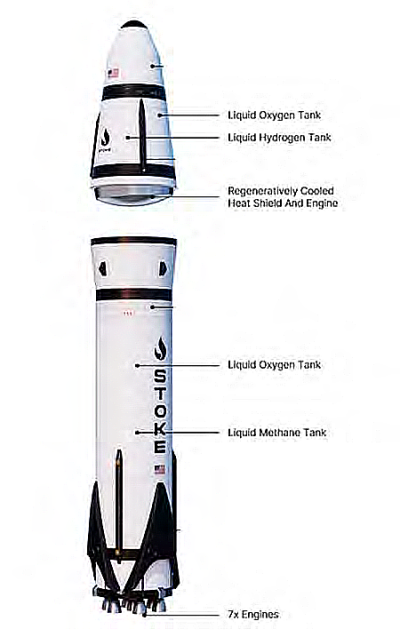A tour of Stoke Space

Tim Dodd of Everyday Astronaut yesterday released a long video in which he got a new tour the Stoke Space facility, led by the company’s CEO and founder, Andy Lapsa.
I have embedded that video below. The image to the right is a screen capture of a static fire test of the company’s Nova rocket’s upper stage engine that was done at the end of the tour. The engine uses a radical design of a ring of small nozzles, with a heat shield in the middle. The design aims to allow that upper stage to return to Earth for reuse, after it has deployed its payload. Nova’s first stage will also be reusable, landing vertically like the Falcon 9.
Though as usual Lapsa said nothing about schedule, it appears that the company is getting very close to its first launch. It appears the company’s launchpad in Florida will be ready for launch early in 2026. It also appears that all the rocket’s components are falling into place.
Lapsa noted that though both stages are designed to land and be reused, the goal for that first launch is simply to demonstrate they can get the rocket into orbit. Neither stage will attempt a landing. Once they’ve got that success under their belt, they will then go for other milestones.
Right now only SpaceX and Stoke Space are working to build a completely reusable rocket. SpaceX is going very big, with Starship. Stoke is aiming for the Falcon 9 market. If successful, it will be able to beat that rocket in price.
» Read more

Tim Dodd of Everyday Astronaut yesterday released a long video in which he got a new tour the Stoke Space facility, led by the company’s CEO and founder, Andy Lapsa.
I have embedded that video below. The image to the right is a screen capture of a static fire test of the company’s Nova rocket’s upper stage engine that was done at the end of the tour. The engine uses a radical design of a ring of small nozzles, with a heat shield in the middle. The design aims to allow that upper stage to return to Earth for reuse, after it has deployed its payload. Nova’s first stage will also be reusable, landing vertically like the Falcon 9.
Though as usual Lapsa said nothing about schedule, it appears that the company is getting very close to its first launch. It appears the company’s launchpad in Florida will be ready for launch early in 2026. It also appears that all the rocket’s components are falling into place.
Lapsa noted that though both stages are designed to land and be reused, the goal for that first launch is simply to demonstrate they can get the rocket into orbit. Neither stage will attempt a landing. Once they’ve got that success under their belt, they will then go for other milestones.
Right now only SpaceX and Stoke Space are working to build a completely reusable rocket. SpaceX is going very big, with Starship. Stoke is aiming for the Falcon 9 market. If successful, it will be able to beat that rocket in price.
» Read more

